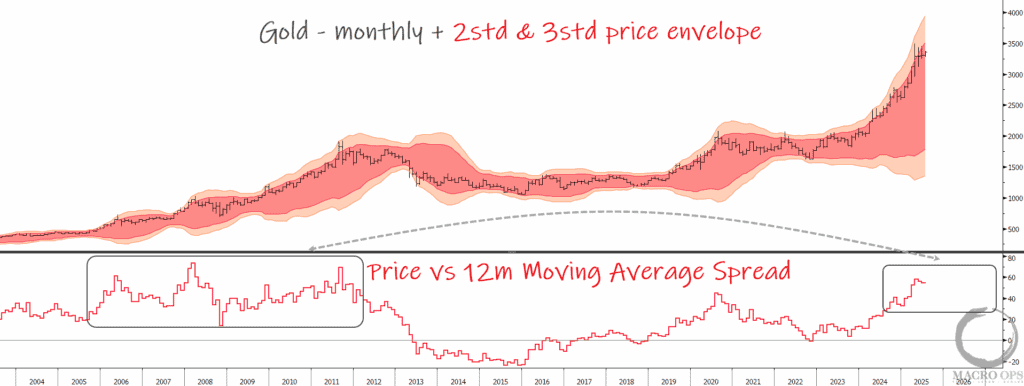Our Value Investing Letter Recaps keep things simple.
Each email focuses on three value investing hedge fund letters, three ideas, all digestible in three minutes.
Within each idea we answer four main questions:
- What does the business do?
- Why is it a good bet?
- Why does the opportunity exist?
- What is the prize if you’re right?
Quick housekeeping note that nothing you read is investment advice and please do your own due diligence before investing. Also, I do not own any of the below-mentioned securities as of this writing.
Finally, we get each investment letter from r/SecurityAnalysis, which you can find here.
This week we analyzed P10, Inc. (PX), Tremor International (TRMR), and Hagerty (HGTY/W).
**Note: Enrollment to the Macro Ops Collective will be open until the end of this week.
The Collective is our premium service that offers institutional-level research, proprietary quant tools, actionable investment strategies, and a killer community of dedicated investors and fund managers from around the world.
If you want to learn more about the Collective and what it can do for you, click here.
With that out of the way, let’s get after it (as always, emphasis added).
Top 3 Value Investing Letters You Need To Know About
1. Alluvial Capital: P10, Inc. (PX)
Dave Waters runs Alluvial Capital and he’s one of my favorite investors. In fact, Dave was an early guest on the Value Hive Podcast. I’m forever grateful for his time. You can check out that episode here.
This is Dave’s first appearance in the Value Letter Recap series. Check out his prior letters here.
Alluvial discusses PX in their Q3 letter, which you can read here.
Let’s dive in.
What does PX do?
“[PX owns] a diversified set of alternative asset managers.”
Why is it a good bet?
“P10 has purchased Western Technology Investment, a manager of venture debt funds. Founded in 1980, WTI has provided nearly $8 billion in debt commitments to venture companies largely in the technology and life sciences sectors. Building on this track record, WTI is expected to launch a new fund in 2024. P10 purchased Western Technology Investment for $97 million in cash plus the equivalent of $40 million in P10 stock, representing a multiple of 11x WTI’s pre-tax cash flow.”
Why does the opportunity exist?
“P10 shares are just plain depressed. It’s not hard to see why. The economic picture is rocky. There are concerns about the ability of alternative managers to raise capital amidst jittery equity and debt markets. It may seem like an inopportune environment in which to own a small, little-known alternatives manager.”
What is the prize if you’re right?
“The company still enjoys supremely predictable, high margin revenues looking out several years. Management is still as sharp as they come and well incentivized to grow the value of the company, not least because they own most of it. Free cash flow per share will continue to grow and the market will come around in the end.”
Further Research Material
2. Mittlemen Brothers: Tremor International (TRMR)
Mittlemen Brothers is a value-based, long-only fund that takes large bets in a handful of concentrated positions. It’s their first appearance in the Value Letter Recap series.
This quarter, the firm features one of its newest investments: TRMR. You can read the entire letter here.
Let’s dive into the name.
What does TRMR do?
“[TRMR is] a significant player in the ad tech space. Based in Tel Aviv, Israel, and with its primary listing in London (1 ADR = 2 London-listed shares), but with over 90% of its sales from the U.S., MIM considers Tremor a U.S. business in terms of geographic exposure …
Ad tech companies like Tremor offer “programmatic” ad buying/selling, which is fully automated using AI and algorithms, providing better targeting, better returns on advertising money spent, and all done in milliseconds.
Tremor operates both on the demand side for advertisers buying ads (DSP, Demand Side Platform) via their Tremor Video and recently acquired Amobee DSP, and also on the supply side via their Unruly SSP (Supply Side Platform) which sells ad space for publishers like News Corp. (which sold Unruly to TRMR).”
Why is it a good bet?
“Most ad-supported businesses reported disappointing results recently, so the near term risk is that the business takes a step backwards before resuming its longer term growth trajectory.
But the fast growing market for digital ads is unlikely to stall for long, and TRMR’s services address a very large market, where market share is actually shifting away from the “walled gardens” of the dominant players like Google and Facebook, and more towards the “open internet”, as well as connected TVs (“CTV”).
Tremor’s services increasingly have somewhat of a SaaS (Software as a Service) profile, but the stock lacks anything close to a SaaS valuation premium.”
Why does the opportunity exist?
“The “tech-wreck” of 2022 saw many former high-flyers crash down from incomprehensible valuations to become priced now more reasonably. But, Tremor was already cheap as the year began and as it went down further, it just became too cheap to ignore.”
What’s the prize if you’re right?
“ MIM paid $8.64 per ADR on average, about 3x its estimate for ’23 EBITDA of $175M (TRMR’s est. of $200M, minus stock based comp.), and 5x FCF of $100M (MIM’s estimate), for a leader in a high-growth industry (digital advertising), with a 35%+ EBITDA margin, and a net cash balance sheet, in a rapidly consolidating field.”
Further Research Material
3. Greenhaven Road Capital: Hagerty (HGTY/W)
Scott Miller, founder of Greenhaven Road, is one of my favorite investors and now a frequent guest on the Value Letter Recap series.
What I like about Scott is his ability to find off-the-beaten-path ideas. I’m talking truly off-the-beaten path. Something he shares with Alluvial Capital’s Dave Waters.
You can read his latest quarterly letter here.
This quarter, Scott dives deep into another off-the-beaten-path name: Hagerty (HGTY).
Let’s dig in.
What does HGTY do?
“The economic engine that powers the company is automobile insurance. More specifically, the company specializes in a particularly niche insurance category: classic and collectible cars.
Hagerty insures everything from 100-year-old cars requiring a crank to start to Mazda Miatas from the 1980s and modern “Super Cars” (McLarens, Bugattis, Lamborghinis, etc.) that are currently in production. What differentiates a Hagerty policy from the traditional policy you have on your Ford / Toyota / etc.?
Hagerty policies aren’t for “daily drivers.” Instead, they are insuring people’s prized possessions like the old convertible that the owner only drives on sunny Sundays to a farmers’ market. People treat their “toys” well, and this shows up in Hagerty’s numbers with their loss ratio (amount paid out for claims) coming in around 41% vs. 70%+ for a typical auto insurer.”
Why is it a good bet?
“For more than a decade, Hagerty has grown at three times the rate of the overall auto insurance industry, fueled by high retention rates (90%+), effective marketing (more on that later), and the partnerships described above. What is not obvious when first studying the company is that existing partnerships tend to be a source of ongoing growth …
Insuring cars with low loss ratios, low customer acquisition costs, and low churn is an excellent business. Creating and supporting a marketplace for classic and collectible cars might be an even better business.
For a marketplace business, there are three important components – the supply side (goods), the demand side (customers), and a trusted intermediary. Hagerty has these pieces.
They can feed the demand side through their media properties and leverage email relationships with over 2M Hagerty Drivers Club members. They also have a top-of-funnel position controlling the valuation tool that is used across the industry.
On the supply side, Hagerty owns the software used by over 200 leading classic car dealers to manage their inventory and also owns several car shows that have traditionally hosted in-person auctions as part of their programming.”
Why does the opportunity exist?
“A SPAC trading at over 200X forward earnings run by a man who almost became a priest should be either the set-up to a bad joke or a pitch for a short investment. However, out of the rubble of SPAC-ageddon emerges a very interesting company: Hagerty, Inc. (HGTY).”
What is the prize if you’re right?
“Hagerty has grown at 3X the overall insurance industry and, with increased penetration of their partnerships, the realization of contractual events, and launching of the marketplace, I believe the top line growth rate will inflect to over 30% per year for the next few years.
Loss ratios should hold steady at ~40% lower than the industry average, and customer acquisition costs will likely decline further to less than half that of the industry average.
Because of the statutory nature of the product (you need insurance if you want to drive your car), the contractual events in 2023 (State Farm and Markel/reinsurance), and a growing marketplace, Hagerty is well-positioned to withstand a recession should one occur in 2023.”
Further Research Material
Wrapping Up This Week’s Value Investing Letters: What To Read Next
Thanks for reading, and I hope you learned something. If you enjoy this series, let me know by shooting an email or retweeting on Twitter.
Also, please let me know if there’s an investor letter I should read that I didn’t cover here.
**Enrollment to our premium service — the Macro Ops Collective — will be open until December 4th.
We’re entering a new macro regime where a lot of money can be made, or lost.
Joining the Collective will give you access to our unique macro insights where we’ll show you exactly what’s affecting the market and how to respond to it. The heavy lifting is done for you so that you’re prepared for anything with just a few minutes of reading per week.
Our goal is to save you time while simultaneously making you more money.
If you’d like to tackle markets with our group (whom, I should note, has been having a great year in the markets), click here to learn more.
And if you have any questions about our service and what it can do for you, make sure to click here to schedule a free consultation call with us.









